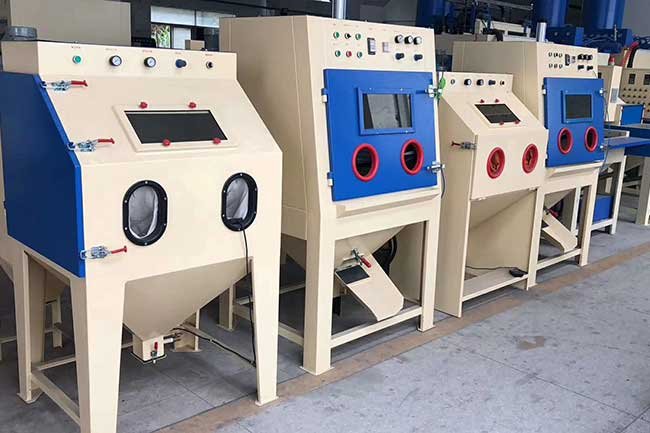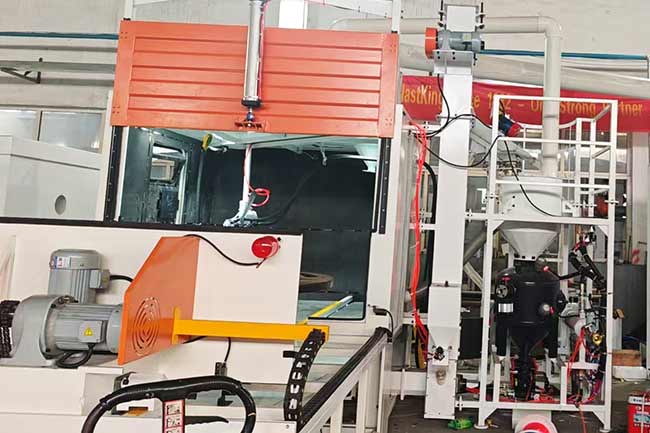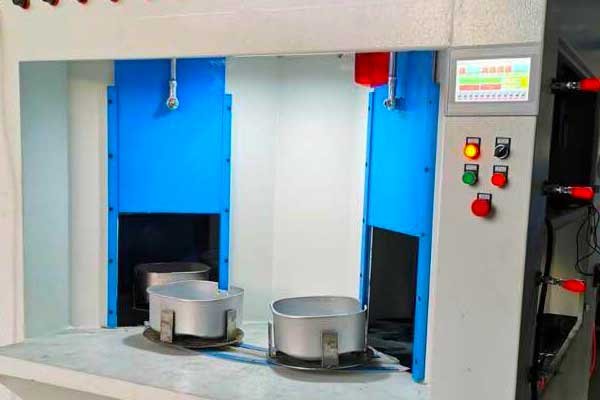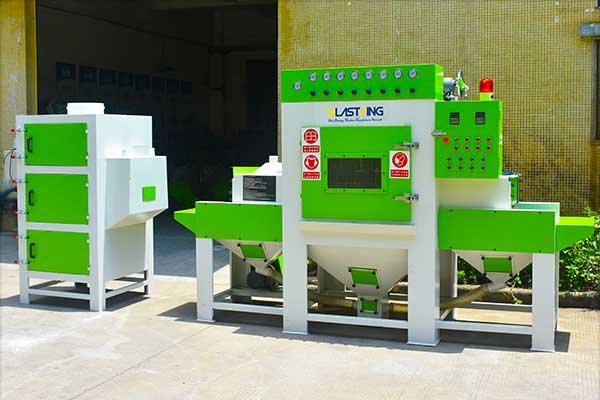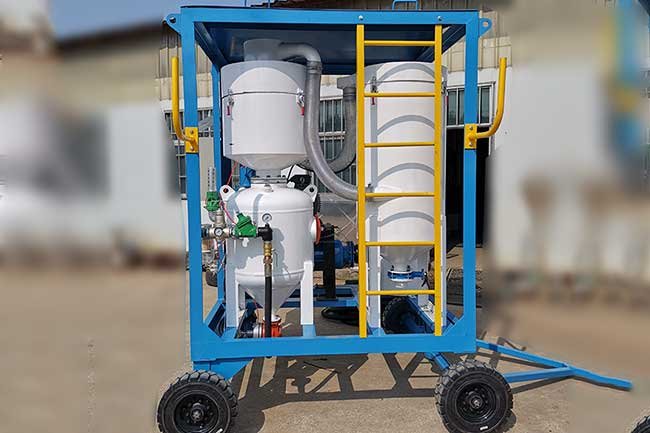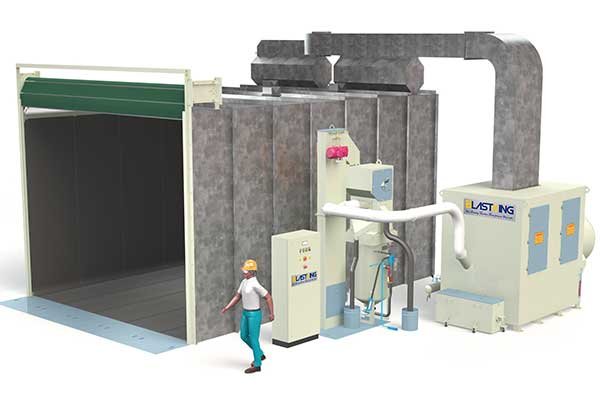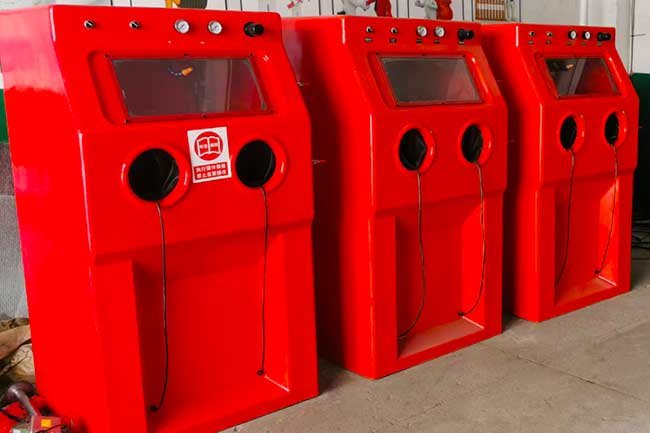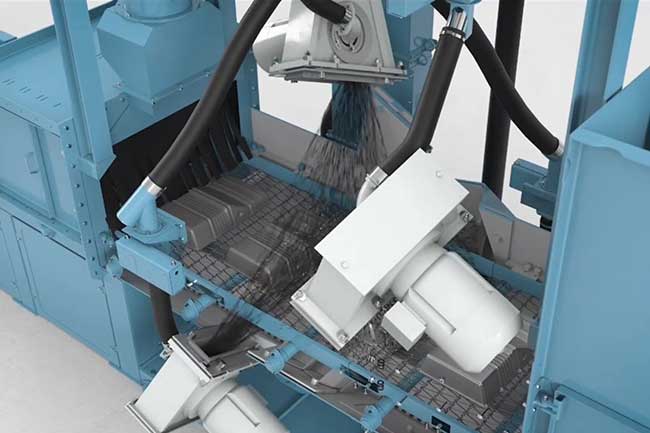Airblast and wet blasting equipment
Updated: November 5, 2025
BlastKing is a world leader in surface preparation technology, offers a complete range of surface preparation technologies, parts, and services, and stands ready to improve our customers’ productivity and profitability.
BlastKing has the most extensive portfolio of airblast machines.
BlastKing offers a comprehensive range of machines catering to various needs, from manual blast cleaning to sophisticated peening machines designed specifically for the Aerospace Industry. Our extensive experience within the technology centers for airblast machines positions BlastKing as a leading authority in the industry, boasting a giant competence pool.
Our commitment to advancing blasting processes is unwavering, and we consistently strive for excellence by incorporating the latest innovative machine concepts. This dedication ensures that BlastKing customers always receive cutting-edge technologies that meet the highest standards in the industry.
Whether you’re seeking manual solutions for blast cleaning or intricate peening machines tailored to aerospace applications, BlastKing’s diverse offerings and expertise are poised to exceed your expectations. Trust in our commitment to continuous improvement and innovation, and experience the best-in-class technologies for your blasting needs.
What is an airblast machine?
Airblast machines come in two primary forms: dry blast rooms/cabinets and wet blast cabinets. These machines play a pivotal role in surface preparation, utilizing both dry and wet blasting techniques.
In the dry blasting process, where free-flowing media is employed, the blast media is pneumatically accelerated by compressed air and propelled through nozzles onto the component. This method is highly effective for tasks that require abrasive action to remove contaminants or prepare surfaces.
On the other hand, wet blasting involves the combination of media with water, creating a slurry mix. Compressed air is then used to propel this mixture through nozzles onto the component. The wet blasting technique is chosen based on the specific requirements of the blasting task. It is often preferred for applications where controlling dust and achieving a smoother finish are essential.
The selection between dry and wet blasting, as well as the choice of abrasive media, is determined by the nature of the blasting task. Both methods offer unique advantages, and the decision depends on factors such as the type of material being treated and the desired outcome.
Whether in dry or wet blasting setups, the blast nozzles can be strategically positioned in fixed locations or operated manually. For enhanced automation and precision, automatic nozzle manipulators or robotic systems can be employed. These systems provide consistent and controlled blasting, ensuring optimal results across various applications.
In summary, airblast machines, whether utilizing dry or wet blasting techniques, are versatile tools in surface preparation. The selection of the appropriate method and abrasive media is tailored to the specific requirements of the blasting task, and the use of automation further enhances precision and efficiency.
Working Video
FAQs (Frequently Asked Questions)
Q1: What is Airblast Equipment used for?
Airblast equipment stands at the forefront of cutting-edge technology in surface preparation and cleaning applications. Specifically engineered for precision and efficiency, these machines utilize the force of compressed air to propel abrasive media onto target surfaces. The process involves the removal of impurities, contaminants, and unwanted coatings, creating an ideal foundation for subsequent treatments or coatings. The versatility of airblast equipment makes it a go-to solution across diverse industries, ensuring optimal results in enhancing surface quality and promoting superior coating adhesion. Whether it’s metal, wood, concrete, or even delicate materials like glass, airblast equipment offers a customizable approach, allowing adjustments based on the abrasive media and equipment settings. The innovation and reliability embedded in airblast technology make it an indispensable tool for achieving impeccable surface finishes in industrial and manufacturing settings.
Q2: How does airblast equipment improve surface preparation?
Airblast machines play a crucial role in industrial surface preparation by efficiently removing impurities from various materials. Through the forceful projection of abrasive media propelled by compressed air, these machines ensure a thorough cleaning process. This meticulous surface preparation not only eliminates contaminants such as rust, scale, or old coatings but also enhances the adhesion of subsequent coatings, promoting a longer-lasting and more durable finish.
By employing cutting-edge technology, airblast machines offer a precise and controlled approach to surface treatment. The adjustable parameters, including air pressure, nozzle size, and choice of abrasive media, allow for customization based on the specific requirements of different materials and applications. This versatility makes airblast equipment a go-to solution in industries ranging from manufacturing and construction to automotive and aerospace.
The result is not just a visually improved surface but one that is optimally prepared for the application of coatings or other finishing processes. The enhanced adhesion achieved through airblast operations ensures that coatings bond securely to the material, providing superior protection against corrosion and wear. Overall, airblast machines contribute significantly to the quality, longevity, and performance of finished products across various industrial sectors.
Q3: What surfaces can airblast equipment be used on?
Airblast equipment, renowned for its versatility, is an indispensable tool in various industries, offering unparalleled capabilities in surface preparation and cleaning. Designed to accommodate a wide array of materials, this equipment exhibits remarkable adaptability, ensuring optimal performance across diverse surfaces.
Whether you are working with robust metal components, intricate wooden structures, solid concrete surfaces, or delicate materials like glass, airblast equipment can be fine-tuned to meet the specific demands of each application. The key to its adaptability lies in the careful selection of abrasive media and the precise adjustment of equipment settings.
For metal surfaces, airblast equipment can efficiently remove rust, scale, and contaminants, preparing the substrate for coatings or other treatments. In woodworking applications, it aids in refining surfaces, ensuring a smooth finish for subsequent processes. In the realm of concrete, airblast technology proves invaluable for cleaning and preparing surfaces, addressing challenges unique to this material. Even when delicacy is paramount, as in the case of glass, airblast equipment can be configured to provide a gentle yet effective touch.
This versatility is a testament to the engineering sophistication of airblast systems, making them indispensable across a spectrum of industries. The ability to tailor abrasive media and equipment settings ensures that the same equipment can be seamlessly integrated into diverse workflows, meeting the ever-evolving demands of modern industrial applications.
Q4: What types of abrasive media can be used with airblast equipment?
A diverse array of abrasive media is employed in airblast and wet blasting equipment, each serving unique purposes based on application requirements and the desired finish. Among the commonly utilized abrasive media are options such as sand, known for its versatility and cost-effectiveness, aluminum oxide, renowned for its hardness and recyclability, steel shot, prized for its durability and ability to impart a peening effect, glass beads, preferred for delicate surfaces and achieving a smooth finish, and garnet, recognized for its natural hardness and suitability in precision applications. The selection process involves careful consideration of factors such as the type of surface being treated, the specific finish desired, and the overall goals of the blasting operation. By choosing the appropriate abrasive media, operators can optimize the effectiveness of the blasting process and achieve superior results across a range of industrial applications.
Q5: Can airblast equipment be customized for specific applications?
Yes, indeed. Many reputable manufacturers recognize the diverse needs of industries and offer extensive customization options for airblast machines. The ability to tailor these machines to specific application requirements is a testament to their commitment to meeting the unique demands of various users. This customization extends beyond the basics, allowing adjustments to crucial blast parameters and features.
Whether it’s adapting the pressure, adjusting nozzle sizes, or fine-tuning other operational aspects, these tailored solutions cater to the nuanced requirements of different applications. Manufacturers collaborate closely with users, comprehensively understanding their workflow, objectives, and challenges. This collaborative approach ensures that the airblast machines not only meet but exceed expectations, delivering optimal performance for specific tasks.
Moreover, the flexibility in customization extends to the choice of abrasive media, accommodating the varied needs of industries. Different applications may demand specific abrasive materials, and manufacturers can provide guidance on selecting the most suitable media based on factors like material composition, desired finish, and overall project goals.
In essence, the commitment to customization empowers users to have airblast machines perfectly aligned with their operational needs. This personalized approach not only enhances the efficiency and effectiveness of the equipment but also contributes to the overall success of diverse industrial applications.
Q6: Is wet blasting a suitable alternative?
Wet blasting, a cutting-edge surface preparation technique, is characterized by the judicious combination of water with abrasive media, resulting in a highly effective and environmentally conscious process. By integrating water into the abrasive stream, this method not only minimizes dust generation but also imparts a more delicate treatment to surfaces. This innovative approach is particularly well-suited for applications where dust reduction is of paramount importance, aligning with stringent environmental and safety standards. The synergistic effect of water and abrasive media enhances the efficiency of the blasting process while providing a versatile solution across diverse industrial contexts.
Get A Strong Partner at Your Side Now!
Consult your dedicated surface preparation equipment experts to make your business succeed!
Call us today at +86 135 8931 7685
